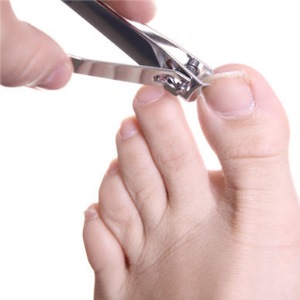Table of Contents
What causes an ingrown toenail?
Patients often visit the Snellville, Georgia office of Ankle & Foot Centers of Georgia because they have a painful, ingrown toenail. This can be the result of a bad pedicure, improper home trimmings (not trimming the nail straight across), toenail injury, or improper shoe gear. Pain develops because the nail edge starts to grow into the adjacent skin. If allowed to progress, the area can become inflamed and infected. Even with antibiotics, you will not have relief unless the impinging nail is removed. Diabetics need to be especially cautious because even a minor infected toenail can quickly cause a severe infection which may lead to an amputation.
What does an ingrown toenail look like?
So what should you look for if you suspect you have an ingrown toenail? Early signs may include tenderness and swelling of the skin around the nail. Signs of an infected toenail include pus, drainage, redness, warmth, pain, and increased swelling. “Bathroom surgery” should not be performed because it typically only makes matters worse. If you have any of the above symptoms you should see a Podiatrist as soon as possible.
How is this ingrown toenail treated?
A Podiatrist will perform a thorough exam, and based on the clinical findings offer a variety of treatment options. Sometimes all that is needed is simple trimming of the offending nail border. However, if the ingrown toenail reoccurs a foot and ankle doctor can perform a permanent partial or total nail removal. The procedure will be performed in the office. First, the Podiatrist numbs your toe with local anesthesia. The offending nail border or total nail is removed along with the root (where the nail grows from). Applying a chemical to the base of the nail prevents the nail from re-growing. It is very rare, but the nail portion can re-grow. A dressing is applied, and your doctor will give after care instructions. Sometimes the doctor will prescribe antibiotics. Your Podiatrist will see you 1 to 2 weeks after the procedure to make sure adequate healing is taking place.
How do I prevent this type of toenail problem?
To prevent the occurrence of ingrown toenails follow these suggestions: trim your nails straight across, don’t cut them too short (it is very important to tell your pedicurist this as well), wear proper fitting shoes (shoes that are too short or too narrow will only cause more problems), and always maintain proper hygiene.






